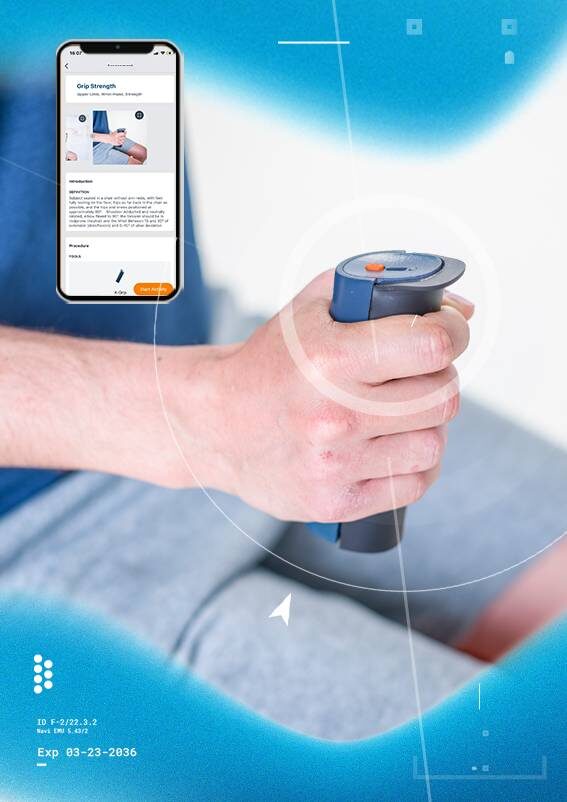
KINVENT allows users to use one or more sensors at the same time in a single exercise to then read the instant feedback on their app. This enables you to plan and pick specific exercises tailored to the patient and monitor their results using biofeedback. The app provides some suggested exercises, depending on the session you wish to complete you can combine customise, and gamify the exercises.
Once you have collected all the data the app can generate reports that can be made as detailed or as simplified as you need. The data can then be exported securely, allowing you to share data instantly. There is also an option for these reports to be branded.
We can provide demos for you and your clinic if you would like to know more about the sensors, app and what they can bring to you.
To understand what each of these sensors we will break them down for you:





A lightweight, versatile, and connected hand-held dynamometer that’s designed to deliver quick strength assessments on the go. It allows you to assess the maximum and isometric strength of almost 40 muscle groups with its range of accessories.
K-Push
Our portable force plates are the perfect solution for measuring static and dynamic balance in a wide range of movements (like stance and squats). With its resistance and its lightweight design, it is ideal for assessment and exercise in proprioception.
K-Force Plates

The non-invasive EMG sensor helps shorten the rehabilitation process by chasing the weakened muscle groups, transcending muscle activation, and tracking the patient’s improvement. The K-Myo is a portable physical therapy device that allows practitioners to collect and analyse data on muscle distribution rates, reconstruction, imbalance, power, and activation.
K-MyoThe KINVENT application offers a range of tools for effectively monitoring patient progress. The evolution of tempo success percentages over time provides a concrete overview of improvement in movement execution. In addition, muscle assessments provide an overall understanding of physical evolution and progress.
This information provides a solid basis for making informed adjustments to exercise routines, to achieve optimal results for each patient. In short, Tempo Training with KINVENT offers a scientifically backed approach to accelerating recovery and preventing injury, paving the way for more effective, personalised rehabilitation.
Shared Decision Making (SDM) is a dynamic communication process where healthcare professionals and patients collaboratively make informed decisions that resonate with the patient’s values and preferences. Three crucial components drive SDM: clear medical evidence, clinician expertise, and patient goals.
Read the article from National Health Service (NHS) England
In conclusion, the integration of KINVENT and real-time biofeedback into Shared Decision Making revolutionises physiotherapy. The integration of technology, exemplified by the KINVENT Physio app, plays a pivotal role in enhancing collaboration between patients and physiotherapists.